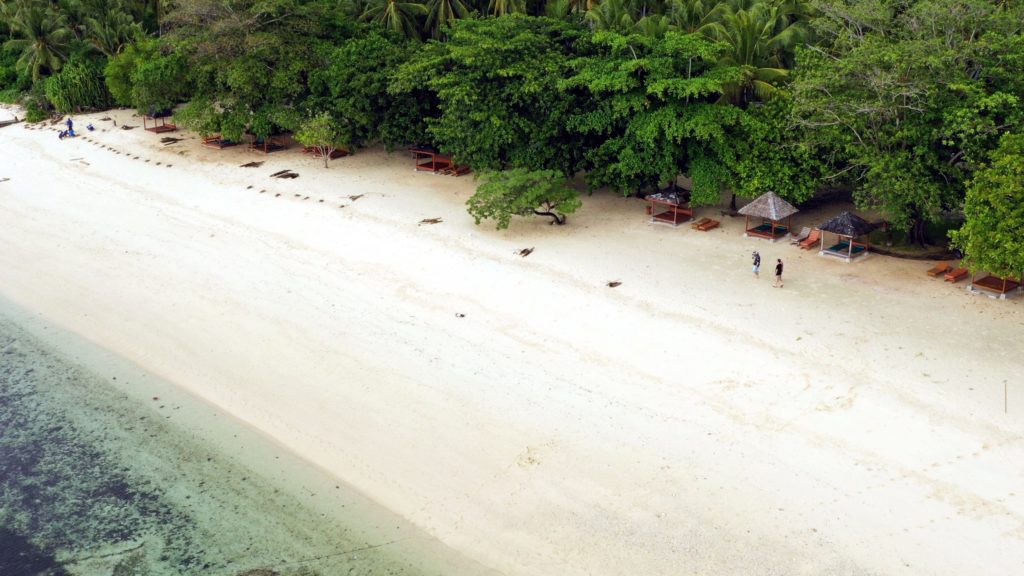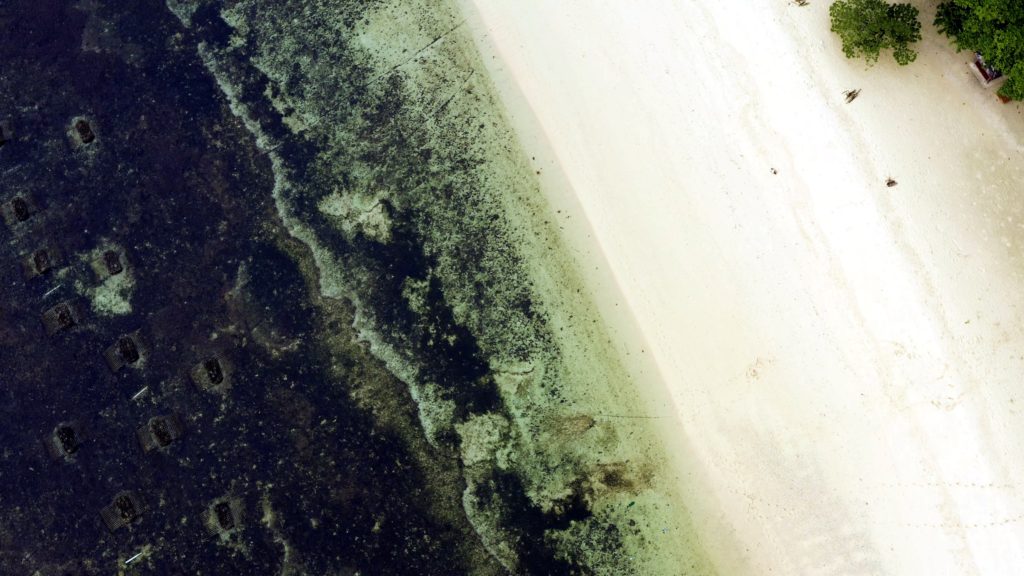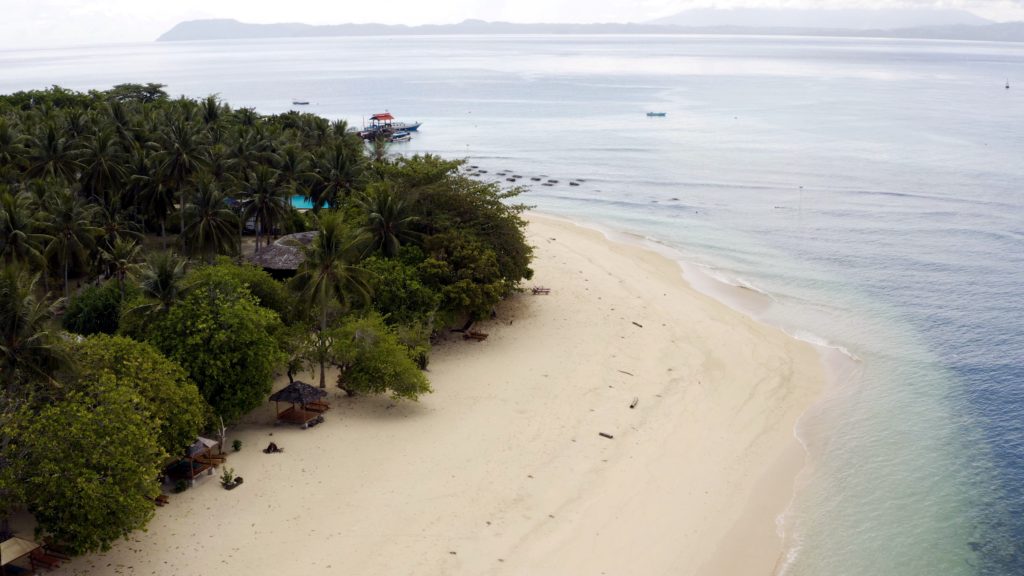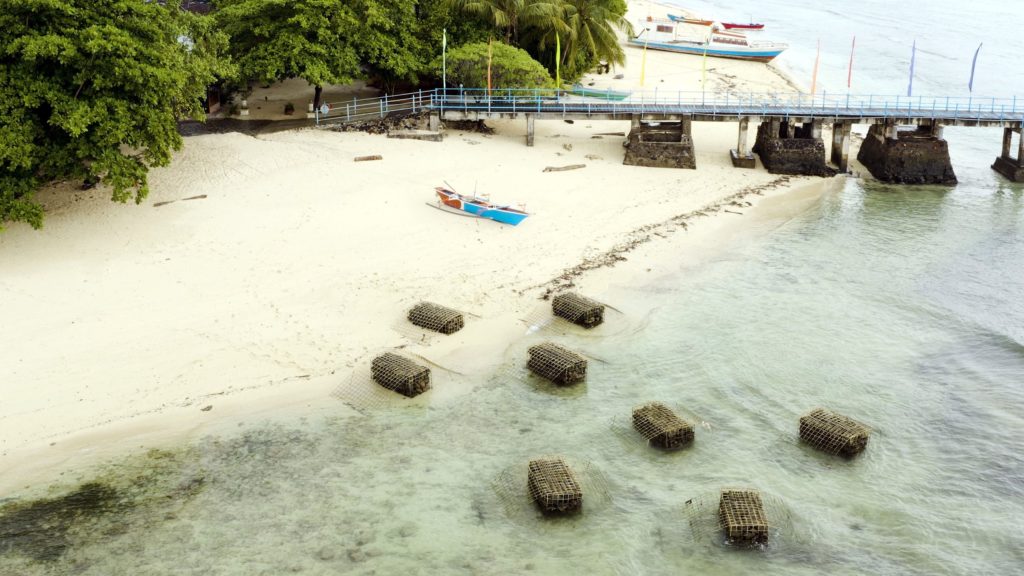Thomas J. F. Goreau, PhD
President, Global Coral Reef Alliance
Scientific Advisor, Biorock Indonesia
The severely eroded beach at Pulau Gangga Resort, North Sulawesi, Indonesia that was naturally regenerated at record rates with Biorock Anti Wave (BAW) reefs (Goreau & Prong, 2017) continued to grow throughout 2018, even through the monsoon season when they normally would have eroded. A second set of BAW reefs on another side of the island grew back an additional severely eroded beach within months of installation, during the monsoon erosion season on that side of the island. Coral, barnacle, oyster, sea urchin, crab, fish populations, and seagrass and sand-producing calcareous algae continue to increase around the BAW reefs.

When the project began in early 2016 there was a 1.5 meter high erosion cliff in the sand right at the front edge of the beach huts, which were about to be moved inland before they could fall into the sea. The tree at center had collapsed on its side into the sea. The fallen horizontal trunk is now buried underneath the sand and a former side branch is now forming a new vertical trunk. Most of the beach growth took place in the first three months as the beach profile turned from concave to convex, but the beach has continued to grow continuously since, throughout both calm and rough monsoon seasons. On this beach erosion is caused by winds from the northwest (at left) during the Australian Monsoon.

From above. By late 2018 the high tide mark had moved seaward by about 10 meters, and the low tide mark by about 15 to 20 meters, as the beach steadily grows.

Looking south beyond the end of the project, the naturally widened beach has extended to the southern end of the island. Strong longshore currents carry sand from bottom to top along the beach. At low tide the tops of a new set of BAW reefs installed by Paulus Prong in mid 2018 can be seen at top left. The unprotected beach on that side had continued to erode after the first beach grew back, so Paulus Prong installed a new set of BAW reefs in front of the eroding beach in mid 2018. That beach had eroded at the opposite season from winds from the southeast during the South East Asian Monsoon.

In mid 2018 the tree at top left was about to fall down because the sand underneath it had completely washed away, the trunk was hanging in the air supported by horizontal roots from the land side, and an erosion cliff about 1 meter high ran along the top left of the image. Beach growth in less than six months is now burying the BAW structures that were closest to the shore.
Beach regeneration at record rates appears due to the fact that wave energy is dissipated by diffraction and refraction through BAW reefs, with little erosion-causing wave reflection, always caused by solid sea walls, and to growth of new sand around structures by calcareous algae. Rates of beach growth naturally depends on wave energy, tidal range, and longshore currents, so will be different at every site.
These extraordinary results suggest that BAW reefs could also turn severely eroding beaches into growing ones at many other places, especially low-lying islands like Pulau Gangga that are already suffering from flooding,caused by global sea level rise and death of coral reefs by global warming.
Read also https://www.globalcoral.org/biorock-electric-reefs-grow-back-severely-eroded-beaches-months/ and watch https://www.youtube.com/watch?v=Mxi1SvmzwcA